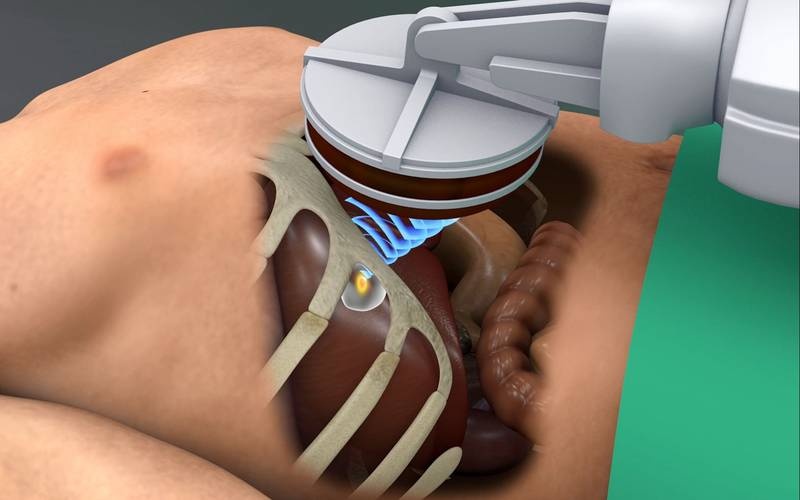
The EU-funded TRANS-FUSIMO project, being led by the Fraunhofer Institute for Medical Image Computing MEVIS in Bremen, is developing a technique in which high intensity focused ultrasound is used to target specific areas of the liver.
High intensity focused ultrasound uses sound waves to target a precise location in the body, generating a hot spot that can destroy diseased tissue.
Until now, however, the method has only been approved for use in treating a limited number of conditions, such as prostate cancer, bone metastases, and uterine fibroids.
Treating organs that move as the patient breathes, such as the liver, is much more difficult, according to Professor Dr Tobias Preusser at Fraunhofer MEVIS.
“The liver is located directly below the diaphragm, which means that with every breath the patient takes the liver moves down and up,” said Preusser. “So as the ultrasound transducer focuses this acoustic wave into the body, the target would constantly move out of and into focus.”
But the researchers have developed a technique to allow the ultrasound device to follow the movement of the liver.
The patient lies in an MRI scanner, which produces an image showing the current position of the liver every tenth of a second. The ultrasound transducer is placed on the patient’s stomach and directs the acoustic waves onto a precise point on the liver. The MRI scanner then measures the temperature in the liver and ensures that the correct spots are sufficiently heated.
But to allow the system to follow the motion of the liver, it also needs to predict where it will be ahead of time. To this end, the researchers have created a model, which they have developed using data on how livers move within the body.
The system compares this model with the movement of the individual patient under the MRI scanner, to predict how the motion will continue.
To avoid damaging the patient’s ribcage, which sits above the liver and is sensitive to high energy ultrasound, the system must also ensure the waves do not pass through the ribs, according to Preusser.
“The algorithm computes which elements of the ultrasound transducer to switch off, to ensure it does not heat the ribs,” he said.




Red Bull makes hydrogen fuel cell play with AVL
Surely EVs are the best solution for motor sports and for weight / performance dispense with the battery altogether by introducing paired conductors...